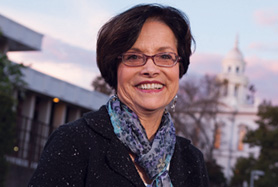My Take
![]()
Not long ago, I read a scathing Wall Street Journal review of Andrew Lohse’s Confessions of an Ivy League Frat Boy. Being part of the Greek system at San José State in the late 1950s and early 1960s, I identified with some of Mr. Lohse’s “frat boy” experiences. During my time at San José State, there were 14 fraternities and 12 sororities on campus. The common belief was that we were the number two party school in the nation (University of Colorado was number one). According to Mr. Lohse, the Greeks at Dartmouth and his Sigma Alpha Epsilon fraternity nearly destroyed his life. His thought was that his fraternity—and all the rest of them—should be abolished. The misconceptions that many students hold about the Greek system echo these thoughts. Below is my take on some of the iconic misunderstandings about fraternity and sorority life.
Myth: Fraternity and sorority members are stereotypical Animal House guys and gals.
My take: This may be the case with a certain few, but look who San José State produced, all members of the Greek system: Peter Ueberroth, chairman of the 1984 Olympics and baseball commissioner; Bill Hauck, longest-serving CSU board member, revered in Sacramento by both parties and dedicated to educational reform; Tom Smothers, comedian and entertainer; Connie L. Lurie, donor extreme to San José State’s College of Education; Mike Deaver, chief aide to the Reagan Administration when they were in the White House; the late Steve Lambrecht, who drove Ken Kesey’s magic bus across the country as described in Tom Wolfe’s Electric Kool-Aid Acid Test and lives on in Garry Trudeau’s Doonesbury comic strip as Zonker.
Myth: Fraternity guys are in college for the toga parties and the girls—and no one bothers to get up for class.
My take: I recall Wallace McDonald, professor of American literature, using us as fodder for his dry, sarcastic commentary on life at San José State. History professors like Charles Burdick and Irma Eichorn made us love their subjects. Their entertaining lectures provided our young minds with material for late-night rap sessions and philosophizing about how we fit into this strange world.
Myth: Life in the fraternity is a conglomeration of food fights and general depravity.
My take: These features certainly did not dominate the social organizations of my day. I once brought Richard Tansey, professor of art history (with bachelor’s, master’s and doctorate from Harvard) to Monday night dinner. I think he was somewhat taken aback that we only served milk and water with dinner. We manages our own houses, meaning if we trashed them, we had to clean them up. If things got too bad, one could always move back into a boarding house or get an apartment. Some did.
Myth: Fraternity and sorority members are shallow and misdirected and you need to remove them from your life as soon as possible.
My take: Today, although I live 150 miles from the San José State campus, I still see brothers from my fraternity at reunions, gatherings in San Francisco, tailgates and at breakfasts with the locals. Maybe there’s something to what we were told as pledges: you make lifelong friends. And, according to available information, the beer-guzzling, cut-off-wearing, go-ahead (known today as flip flops) crowd from the 1950s and early 1960s have given more than $50 million to San José State. Not bad for the wild and crazy “frat rats” from the past!



